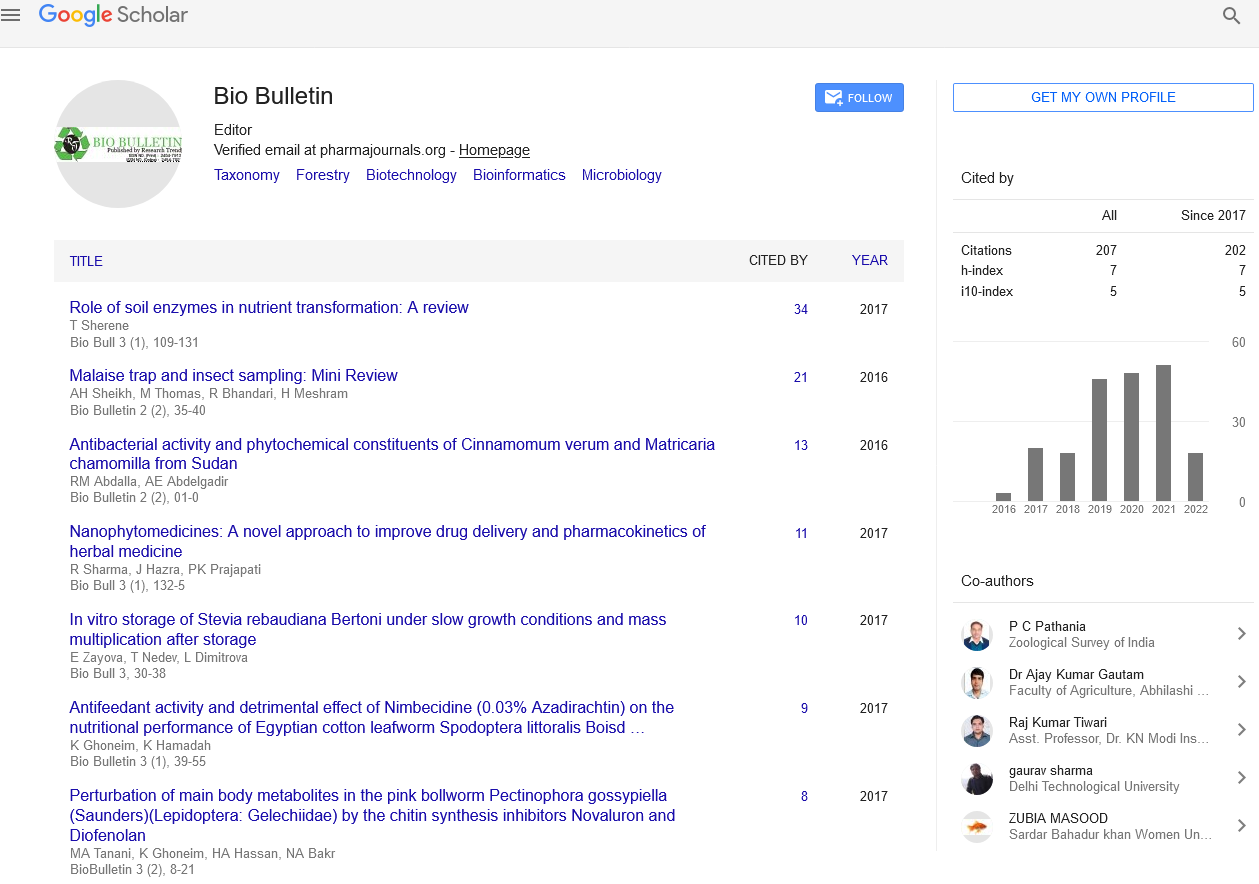Aero-mycoflora of National Highways in Andhra Pradesh, India
Abstract
Author(s): Praveen Kumar Nagadesi and Harly Jayaraj
National highways or roads were most frequently polluted areas in the world. Burning of petroleum products in vehicles releases green house gases like CO2, CO, NO2, SO2, CFC, particulate matter; in which Fungal spores constitute a significant fraction of bio-aerosol. Among the different microorganisms in bio-aerosol, fungal spores are larger in concentration. A survey was undertaken during 2012-2015 to evaluate the airborne fungi in the indoor environment of the Andhra Loyola College, Library and Intermediate block and outdoor environment of National Highways-5 (NH-5) across Vijayawada, Andhra Pradesh, India. The trapping of fungal spores was done using plate exposure method. More number of microbial and fungal colonies was observed in Ramavarappadu Ring Road, NH-5 when compared to NTR University, Benz Circle. Most frequently observed fungal spores on national highways are Aspergillus niger, A. flavus, A. fumigatus, A. awamorii, Alternaria alternata, Chaetomium globossum, Pencillium sp and Rhizopus stolanifer. For the first time Aero-mycoflora of National Highways was studied in India.
matadorbet grandpashabet betist bahsegel klasbahis jasminbet hepsi bahis dinamobet betvole betpark betlike betboo sultanbet tulipbet padisahbet savoybetting goldenbahis maksibet fenomenbet jojobet tarafbet
Share this article

Google Scholar citation report
Citations : 320
Bio Bulletin received 320 citations as per Google Scholar report
